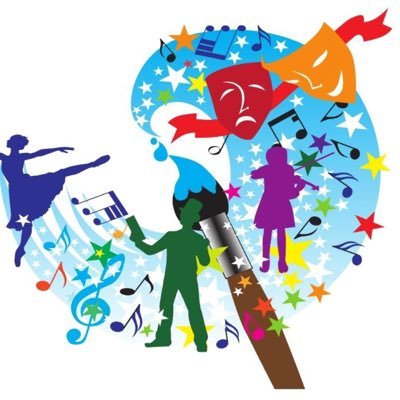The Stylophone can be an effective tool for music therapy due to its simple design and accessibility. Its intuitive nature allows individuals of all ages and abilities to engage in musical expression, promoting emotional well-being and enhancing cognitive skills.
Stylophone As A Tool For Music Therapy
Music has been an integral part of human culture for centuries. Its therapeutic effects on our minds and bodies have long been recognized. Music therapy, a discipline that uses music to address physical, emotional, cognitive, and social needs of individuals, has gained popularity in recent years. Among the various musical instruments employed in music therapy, the Stylophone has emerged as a unique and effective tool for healing and relaxation.

What is a Stylophone?
The Stylophone, invented in the late 1960s by Brian Jarvis, is a pocket-sized electronic keyboard. Its compact design and simple interface make it accessible to individuals of all ages and musical abilities. The instrument features a metal keyboard with conductive strips, which are played using a stylus or “stylo.” When the stylus makes contact with the strips, it completes an electrical circuit, producing a distinct sound.
The Role of Stylophone in Music Therapy
The Stylophone offers several therapeutic benefits when incorporated into music therapy sessions. Its ease of use and versatility make it suitable for a wide range of therapeutic techniques. The instrument’s unique sound and tactile nature create an engaging and interactive experience for both the therapist and the client.
Expressive Communication and Emotional Release
Music therapy aims to provide individuals with a means of self-expression and emotional release. The Stylophone facilitates this process by allowing individuals to express their emotions through music. Its simple and intuitive interface enables clients to create melodies and experiment with different sounds, fostering a sense of freedom and creative expression. In therapy sessions, clients can use the Stylophone to communicate their emotions non-verbally, providing an outlet for those who may struggle with verbal expression.

Cognitive and Physical Rehabilitation
Stylophone play can also be beneficial for individuals undergoing cognitive and physical rehabilitation. The instrument stimulates cognitive abilities such as memory, attention, and problem-solving skills. Through structured exercises and musical games, therapists can help clients improve their cognitive functions while enjoying the process.
Additionally, the physical act of playing the Stylophone can aid in the rehabilitation of fine motor skills and hand-eye coordination. The instrument’s small size and responsive touch strips encourage precise finger movements, making it an ideal tool for individuals recovering from physical injuries or conditions affecting their motor abilities.
Creating a Relaxing and Calming Environment
One of the strengths of the Stylophone lies in its ability to produce soothing sounds. The instrument’s unique timbre and gentle tones create a relaxing and calming environment, reducing stress and anxiety. Therapists often incorporate the Stylophone into relaxation techniques, such as guided imagery and deep breathing exercises. The instrument’s simplicity allows clients to focus on the therapeutic aspects of the music, promoting a sense of tranquility and well-being.
Inclusivity and Accessibility
Accessibility is a crucial aspect of music therapy, and the Stylophone excels in this regard. Its compact size, user-friendly interface, and affordability make it accessible to individuals of all ages and abilities. Moreover, the Stylophone can be adapted to accommodate various accessibility needs, such as larger touch strips for individuals with limited dexterity or customized interfaces for visually impaired clients. The instrument’s inclusivity ensures that music therapy remains accessible to a diverse range of individuals, fostering a more inclusive and equitable practice.

Case Studies and Success Stories
Numerous case studies and success stories highlight the effectiveness of Stylophone music therapy. For example, children with autism spectrum disorder have shown improvements in social interaction and communication skills through Stylophone play. Stroke patients have experienced enhanced motor control and coordination after engaging with the instrument. These real-life examples demonstrate the transformative power of the Stylophone in therapeutic settings.
Ethical Considerations and Guidelines
While the Stylophone offers numerous therapeutic benefits, it is essential to recognize the importance of trained professionals in utilizing the instrument for therapy. Music therapists possess the expertise and knowledge required to create tailored treatment plans, monitor progress, and ensure the safety and well-being of their clients. Ethical considerations, such as maintaining client confidentiality and providing a supportive therapeutic environment, should be paramount in any music therapy practice involving the Stylophone.
When you want to impress a girl but you have a Stylophone (and a guitar)
FAQs
Is the Stylophone suitable for all age groups?
Absolutely! The Stylophone’s compact size and user-friendly interface make it accessible to individuals of all ages, from children to seniors.
Can the Stylophone be used in group therapy sessions?
Yes, the Stylophone is often employed in group therapy sessions. Its simple interface allows for collaborative music-making, fostering social interaction and teamwork.
Can the Stylophone be used by individuals with physical disabilities?
Certainly! The Stylophone’s adaptability and customization options make it accessible for individuals with physical disabilities. It can be modified to accommodate specific needs, such as larger touch strips or customized interfaces.
Are there any limitations to using the Stylophone in therapy?
While the Stylophone offers numerous benefits, it is important to note that music therapy is a comprehensive practice. The instrument should be integrated as part of a broader treatment plan tailored to each individual’s needs.
Can playing the Stylophone be therapeutic for individuals without musical experience?
Absolutely! The Stylophone’s simplicity and intuitive design make it suitable for individuals without musical experience. Music therapy sessions can be designed to accommodate various skill levels, ensuring that everyone can benefit from the therapeutic effects of the instrument.
Conclusion
The Stylophone has emerged as a valuable tool in music therapy, offering a range of therapeutic benefits. Its simplicity, versatility, and accessibility make it an ideal instrument for expressive communication, cognitive and physical rehabilitation, creating a relaxing environment, and promoting inclusivity.
The unique sound and tactile experience provided by the Stylophone contribute to its effectiveness in therapy sessions. By harnessing the power of music and the engaging nature of the Stylophone, music therapists can facilitate healing, self-expression, and personal growth for their clients.


